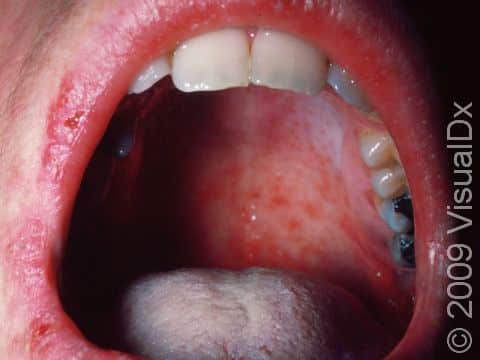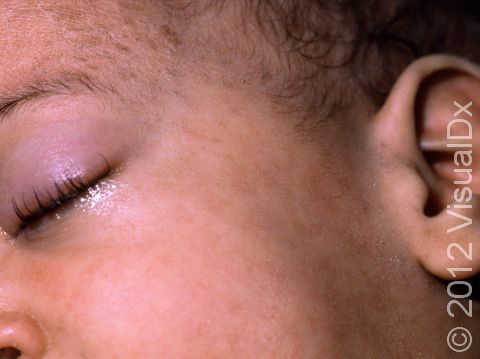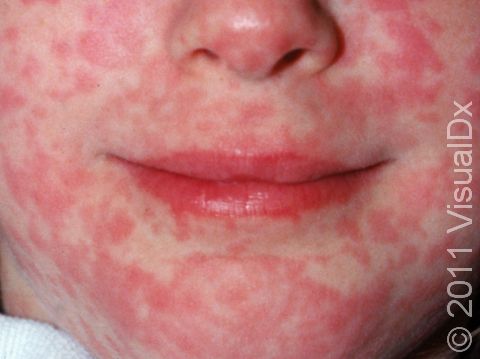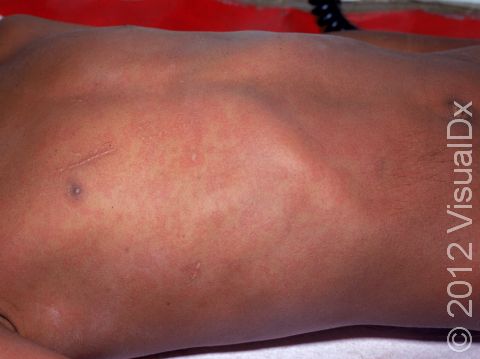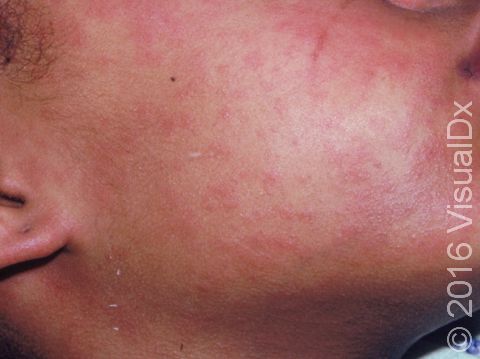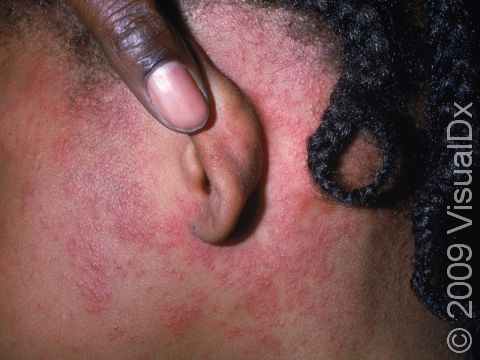Measles (Rubeola)
Measles, also known as rubeola, is an infection of the respiratory system that is caused by the measles virus. Measles is highly contagious and spreads when an infected person coughs or sneezes. It is best prevented by vaccination.
Measles is more common in developing countries as most people in industrialized nations are vaccinated. However, local outbreaks in communities with clusters of unvaccinated individuals still occur in the United States.
The symptoms of measles generally begin between 7 and 14 days after the person was infected and start with 3-5 days of high fevers, cough, runny nose, and red, watery eyes followed by a rash. The rash consists of small, red macules (flat, smooth areas of skin) and papules (small, solid bumps) that begin on the head and face near the hairline and move downward toward the feet to cover the body.
The person usually is well after 2 weeks of illness and then has lifelong immunity to becoming infected again. Complications from measles more commonly occur in children aged younger than 5 years and adults older than 20 years. Complications include ear infections and diarrhea. Serious complications of measles include blindness, inflammation of the brain caused by infection (encephalitis), and pneumonia. About one in every 1000 children will die from complications of a measles infection.
Who's At Risk?
Measles occurs all over the world, primarily in late winter and spring. Most children in the United States have been immunized against measles. Measles is often brought into the United States by unvaccinated travelers who spread it to susceptible individuals with whom they have contact.
Signs & Symptoms
- The first signs of infection are a fever, bad cough, runny nose, and red, watery eyes.
- Sometimes red papules with blue-white centers appear inside the mouth, called Koplik spots.
- After 3-4 days, a rash begins with red macules and papules, first appearing behind the ears and at the forehead. The rash then spreads down the neck, arms, trunk, and finally the legs. In lighter skin colors, the rash is red. In darker skin colors, the redness may be harder to see, or it may appear purple or darker than surrounding skin. The rash can merge together on the face.
- The rash of measles does not usually itch.
Self-Care Guidelines
- Make sure everyone in contact with the ill child has been vaccinated against measles or had measles in the past.
- Treat fever with acetaminophen (Tylenol) or ibuprofen (Motrin, Advil).
- Encourage the child to drink fluids and to rest.
- Use a cool-mist vaporizer to help reduce coughing.
Treatments
There are no medications to cure measles, but the medical professional can recommend ways to reduce symptoms, such as fever or cough. The medical professional may prescribe a dose of vitamin A once a day for 2 days.
Visit Urgency
- Call your child’s medical professional if you think the child may have the measles. Measles is especially dangerous for infants and children with weakened immune systems due to illness or certain medications.
- Call the medical professional immediately if your child has problems breathing, confusion, vision problems, or pain in the chest or belly.
Trusted Links
References
Bolognia J, Schaffer JV, Cerroni L. Dermatology. 4th ed. Philadelphia, PA: Elsevier; 2018.
James WD, Elston D, Treat JR, Rosenbach MA. Andrew’s Diseases of the Skin. 13th ed. Philadelphia, PA: Elsevier; 2019.
Kang S, Amagai M, Bruckner AL, et al. Fitzpatrick’s Dermatology. 9th ed. New York, NY: McGraw-Hill Education; 2019.
Paller A, Mancini A. Paller and Mancini: Hurwitz Clinical Pediatric Dermatology. 6th ed. St. Louis, MO: Elsevier; 2022.
Last modified on October 6th, 2023 at 1:55 pm

Not sure what to look for?
Try our new Rash and Skin Condition Finder
